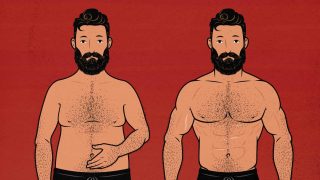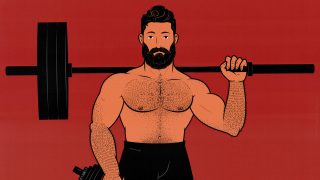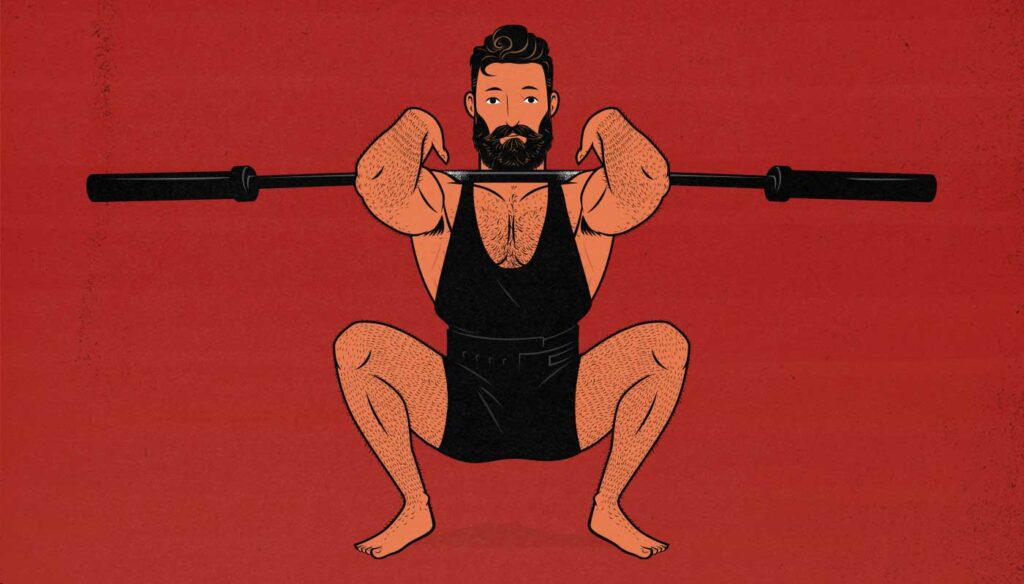
How to Warm Up Before Lifting Weights
What’s the best way to warm up before lifting weights? Should we do cardio? Does that help? Is it necessary? And should you stretch? Some research shows that stretching can reduce our size and strength gains. But is that true?
And what about warm-up sets? There’s no doubt that they’re an important part of warming up before lifting heavy weights. But how much weight should we lift during those warm-up sets, and how long should we rest between them?
In this article, we’ll go over the research looking into the best way to warm before your workout. By end, you’ll know how to reduce your risk of injury, how to improve your technique and range of motion, and how to gain more muscle size and strength.
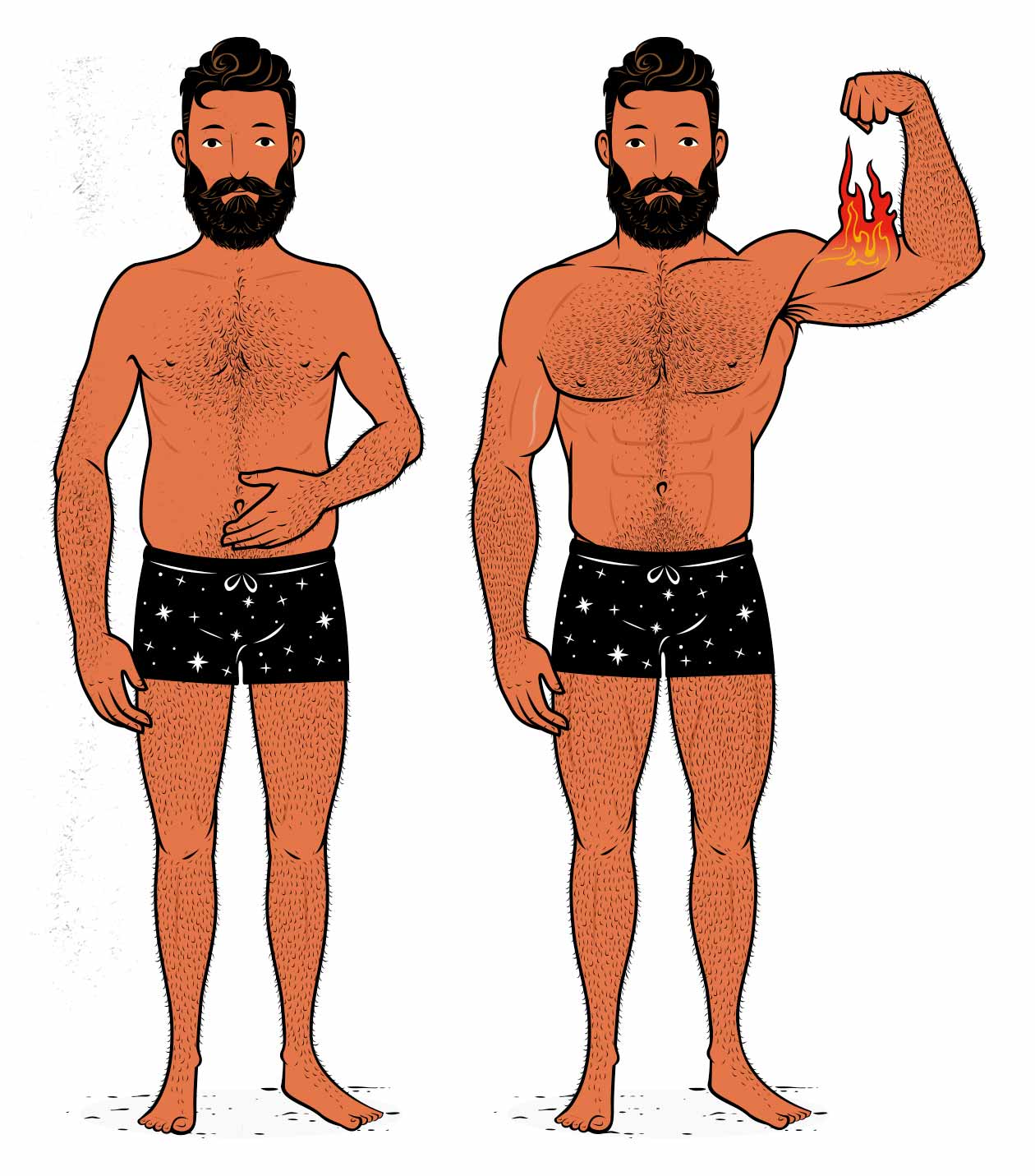
What Does Warming Up Do?
The main reason that people warm up is to reduce their risk of injury. In this systematic review, 3 of the 5 studies they reviewed showed that warming up before physical activity lowered the participants’ risk of injury. That’s far from conclusive, but the evidence does lean in favour of warming up, at least for some types of physical activity.
With weight lifting, people also warm up to increase their range of motion (study), allowing them to lift with better technique and stimulate more muscle growth. For example, if you can sink deeper into your squat, you’ll get a better stretch on your quads, stimulating more muscle growth. The effect is huge, too. Some studies show twice as much muscle growth from challenging our muscles at longer muscle lengths. Whether you get this benefit, though, depends on whether warming up allows you to use a deeper range of motion.
The final reason that people warm up is to help them lift more weight, allowing them to gain more strength and muscle mass. The performance benefits depend on the type of warm-up being done, and some methods are better than others (study), but if a warm-up allows you to lift more weight or squeeze out more reps, it will improve your results.
What’s the Best Way to Warm Up?
How to Improve Your Technique With Drills
Another popular way of warming up before lifting weights is to do drills. These drills have a variety of purposes. Perhaps you have a hard time keeping your spinal neutral when doing your front squats, so you warm up with some dead bugs to remind you how to properly engage your core. Or maybe you have a hard time keeping a neutral spine when doing deadlifts, so you do a breathing drill to remind you how to brace your belly.
These drills are all optional, and you should use the ones that benefit you personally. Here are some that we’ve found incredibly useful for helping people do their compound lifts with better technique:
- Planks, to teach people how to maintain a neutral spine by engaging their abs and obliques.
- Dead bugs, to teach people how to keep their core braced while moving at the shoulders and hips, as is needed for the overhead press, squat, and deadlift.
- Bird dogs, to teach people how to keep their lower back in the correct position while moving at the hips, as is needed for the squat and deadlift.
- 90/90 hip lift, to teach people how to keep their pelvis in a neutral position while lifting, allowing them to squat and deadlift with a much deeper range of motion.
- Goblet squats, to teach people how to sink deep into a squat while keeping an upright torso. These work great before doing heavier sets of front squats.
- Romanian deadlifts, to teach people how to hinge at the hips without bending at the back. These work great before doing conventional deadlifts.
What’s interesting about these drills is that Marco learned them while working as a strength coach for college, professional, and Olympic athletes. Later, we realized that they’re also incredibly popular among high-level powerlifters, such as Chad Wesley Smith. There’s very little research proving a benefit, but in practice, they seem to do a great job of improving lifting technique.
How to Do Warm-Up Sets With Weights
By far the most important part of warming up is to gradually ease up to your working loads, giving your joints, tendons, and muscles some time to prepare for the heavy lifting.
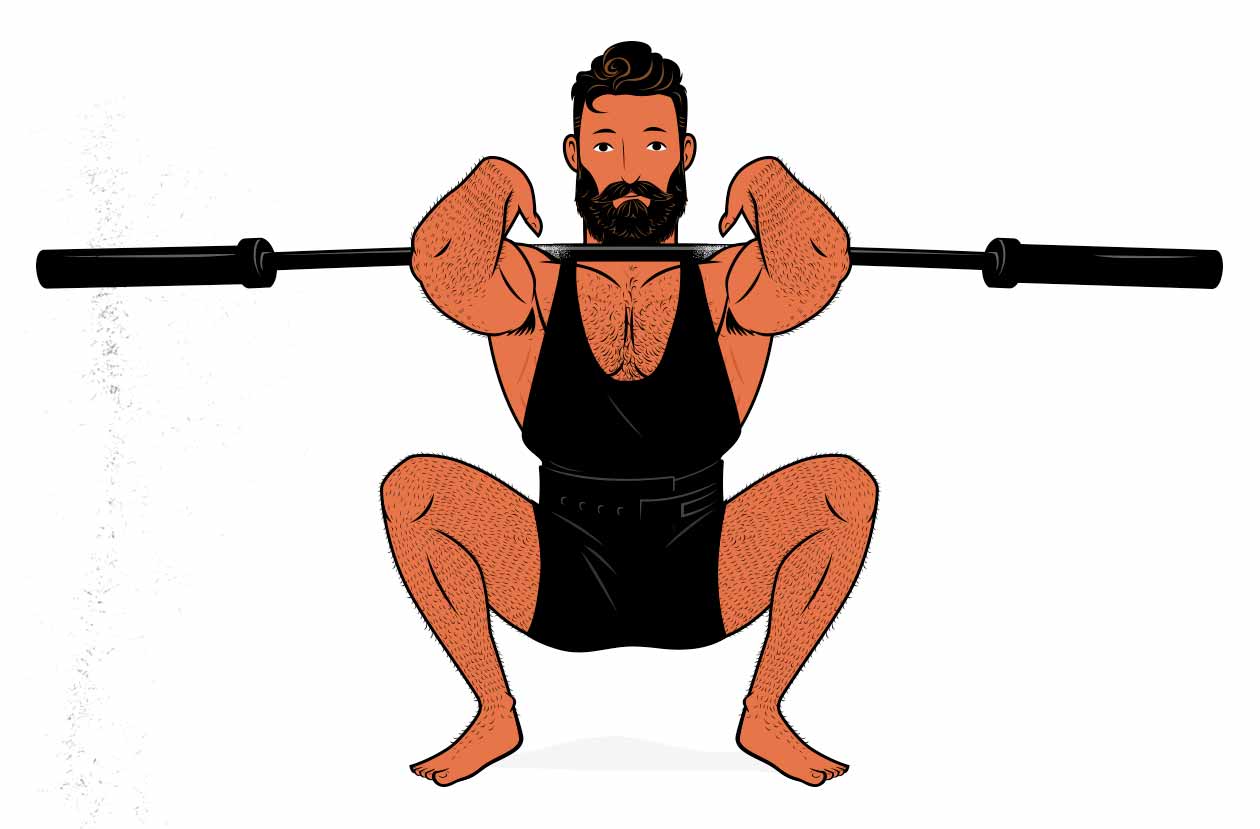
The other important part of warming up is to get in some quality practice. Every warm-up rep should be as perfect as you can make it. Lift with gusto, put in real effort, brace hard, lift explosively, and don’t rush through it.
Here’s how to do your warm-up sets:
- 10 easy reps. Start with a weight that you can do for around 20 reps, and do an easy set of 10 reps with it. The weight should feel light and you’ll be stopping 10 reps away from failure, so focus on using a deep range of motion and doing the lift correctly.
- Add a bit of weight, drop the reps. After your light warm-up set, start increasing the load. There’s no specific amount that you need to increase the weight by, but the idea is to work up to some easy sets with heavier weights. Maybe you do 5–8 reps with a weight you can do for 15 reps.
- If you’re doing heavy sets, do extra warm-up sets. If you’re doing sets of 8–20 reps on smaller lifts that you’re good at, then you don’t need very many warm-up sets. But if you’re doing sets of 3–7 on the squat, bench press, or deadlift, it helps to gradually work your way up. So maybe you do a set of 3 reps with your 8-rep max.
- Warm up past your working weight (post-activation potentiation). If you want to improve your performance on your working sets, some research shows a benefit to warming up with a set that’s around 5–10% heavier than your working sets. For example, if your workout routine has you doing 10 reps on the bench press with 185 pounds on the bar, you might want to lift 205 pounds for 2–3 reps as your final warm-up set. After that, the 185-pounds sets will feel lighter, and you might be able to eke out more repetitions.
So that’s the general idea, but depending on how strong you are and what kind of lifting you’re doing, your warm-up routine can change quite a bit. Let’s go over some examples.
Warming up for a 20-rep set of bodyweight push-ups. In this case, the exercise is light, the risk of injury is low, and you’re doing plenty of reps on your working sets. To warm-up, then, all you need to do is make sure that you’re using a full range of motion and aren’t feeling too stiff. Your warm-ups might look like this:
- 10-rep set of push-ups, focusing on going deep and using good technique.
- Working sets: aiming for 20 reps.
Warming up for a 10-rep set of bench press with 185 pounds. In this case, the rep range is a bit lower, but the lift is still fairly light and simple, and the risk of injury is low. So to warm up, all you need to do is grease the groove a little bit, warming up your elbows and practicing your technique.
- 10 reps with 135 pounds.
- 5 reps with 165 pounds.
- 2–3 reps with 205 pounds (optional).
- Working sets: 10 reps with 185 pounds.
Warming up for a 3-rep set of deadlifts with 405 pounds. In this case, we have a big compound lift done in a low rep range with a lot of weight. This is where we want to use a copious amount of warm-up sets.
- 10-rep set of deadlifts with 135 pounds.
- 8 reps with 225 pounds.
- 5 reps with 315 pounds.
- 1 reps with 365 pounds.
- Working set: 3 reps with 405 pounds.
So, overall, there are no strict rules. The purpose is simply to start with a weight that’s very light, pumping out a bunch of reps to practice your technique and warm up your muscles, tendons, and joints. From there, gradually add weight to the bar until you get to your working weight.
Frequently Asked Questions
Should You Warm Up With Cardio Before Lifting Weights?
Doing cardio before lifting weights is common, but it isn’t always needed. If you’re feeling stiff, sore, or cold, or if you’ve just woken up, then doing a few minutes of light cardio can help. It gets your blood flowing, literally warms you up, and prepares you for the heavier lifting to come.
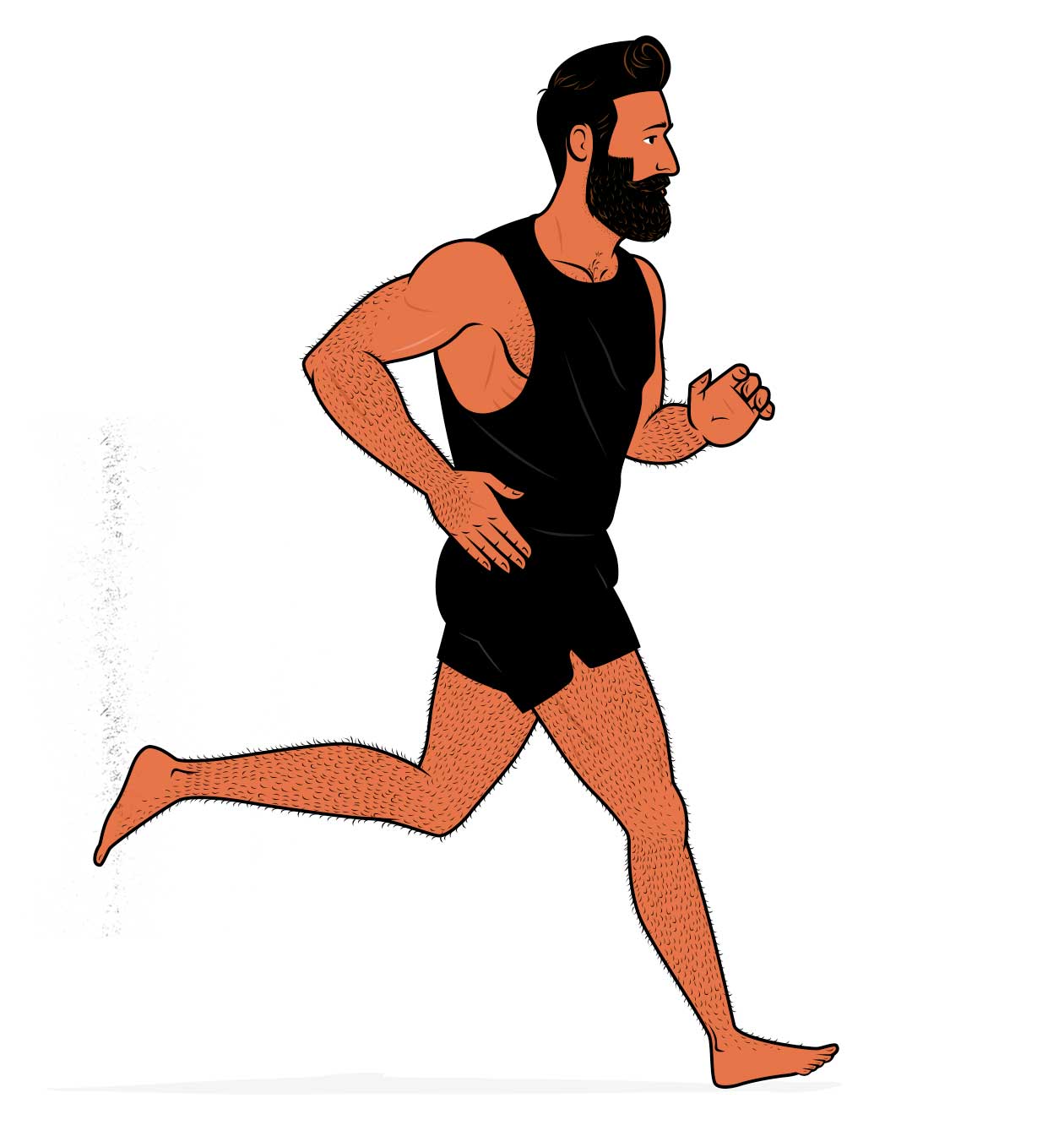
But if you’ve already woken up and moved around a bit, and if you aren’t feeling cold or stiff, then you can skip this part. It won’t reduce your risk of injury, increase your range of motion, or improve your strength.
Should You Stretch Before Lifting Weights?
In the past, before lifting weights, it was recommended to do static stretches, where we hold our muscles in a stretched position for 20–45 seconds. The idea was that these stretches made us more limber, increased our flexibility, reduced our risk of injury, and improved our workout performance. But that wound up not being true.
When it was studied, it turned out that static stretching harmed our workout performance (study, study, study, study, study, study), and recent research has shown that it can reduce the amount of muscle we build (study). With that said, you’d need to stretch really hard to notice a reduction in strength or muscle growth. A bit of light stretching before lifting is nothing to worry about. But that’s why most modern workout routines don’t recommend static stretching before lifting weights.
However, there’s another type of stretching: dynamic stretching. With dynamic stretching, instead of holding our muscles in a stretched position for 20–45 seconds, we move them dynamically through a full range of motion. This doesn’t seem improve our workout performance, but it doesn’t harm our muscle growth either (study), and it may reduce our risk of injury.
When I was a new lifter, I had a lot of trouble doing the exercises properly, and I found that doing some dynamic stretches beforehand helped me improve my range of motion. Now that I’ve been lifting for a decade, I can access my entire range of motion very easily, and without needing to warm up at all. I don’t do any stretching. I just go straight to my warm-up sets. So if stretching helps you lift with better technique or use a greater range of motion, I say go for it. But if it’s not giving you any benefits then feel free to skip it.
How Long Should You Rest Between Warm-Up Sets?
Take as much rest as you need between warm-up sets. Let your breathing and heart rate return to normal, same as when resting between regular sets. The idea is to approach each warm-up set feeling fresh, that way you can practice lifting with great technique and focus.
With that said, you probably won’t need to rest very long between warm-up sets. They aren’t very heavy, and you aren’t going very close to failure, so the rest times should be much shorter than they are between your working sets. Oftentimes, by the time you’re done adjusting the load on the bar, you’re already ready for the next warm-up set. But take as long as you need.
It’s especially important to rest after your final warm-up set. It’s the heaviest one, and it leads right into your working sets. If you don’t rest long enough, your performance will be lower on your working set, which will limit how much muscle size and strength you gain from it.
Do You Need to Warm Up Before Every Exercise?
The main purpose of the warm-up is to get some blood flowing into your muscles, tendons, and joints. If you’ve already warmed those areas up with your first exercise, you don’t need to do much extra warming up after that. For example, if you warm up properly for the bench press, do a few sets, and then move on to the skull crusher, you don’t really need to worry about warming up your elbows. They’re already warm from doing the bench press.
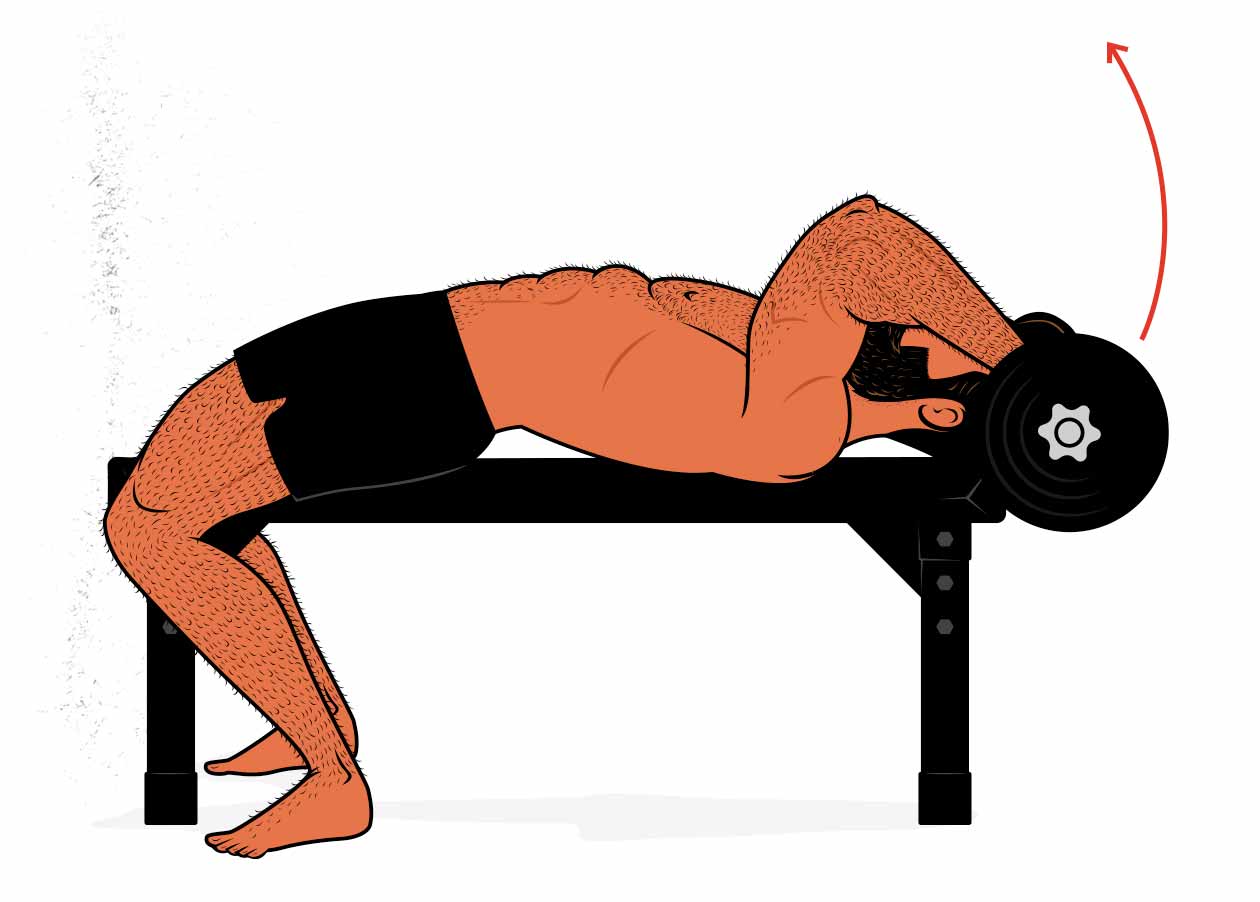
On the other hand, if you’re doing a full body workout, starting with the bench press, then doing squats, and then moving over to barbell rows, those specific areas won’t be warm yet, and so you should do a couple of warm-up sets to ease into your working weights.
Summary
There are three main purposes of warming up: to improve our technique, to increase our lifting performance, and to reduce our risk of injury. We can get most of these benefits simply from easing into our workout routine with some lighter warm-up sets.
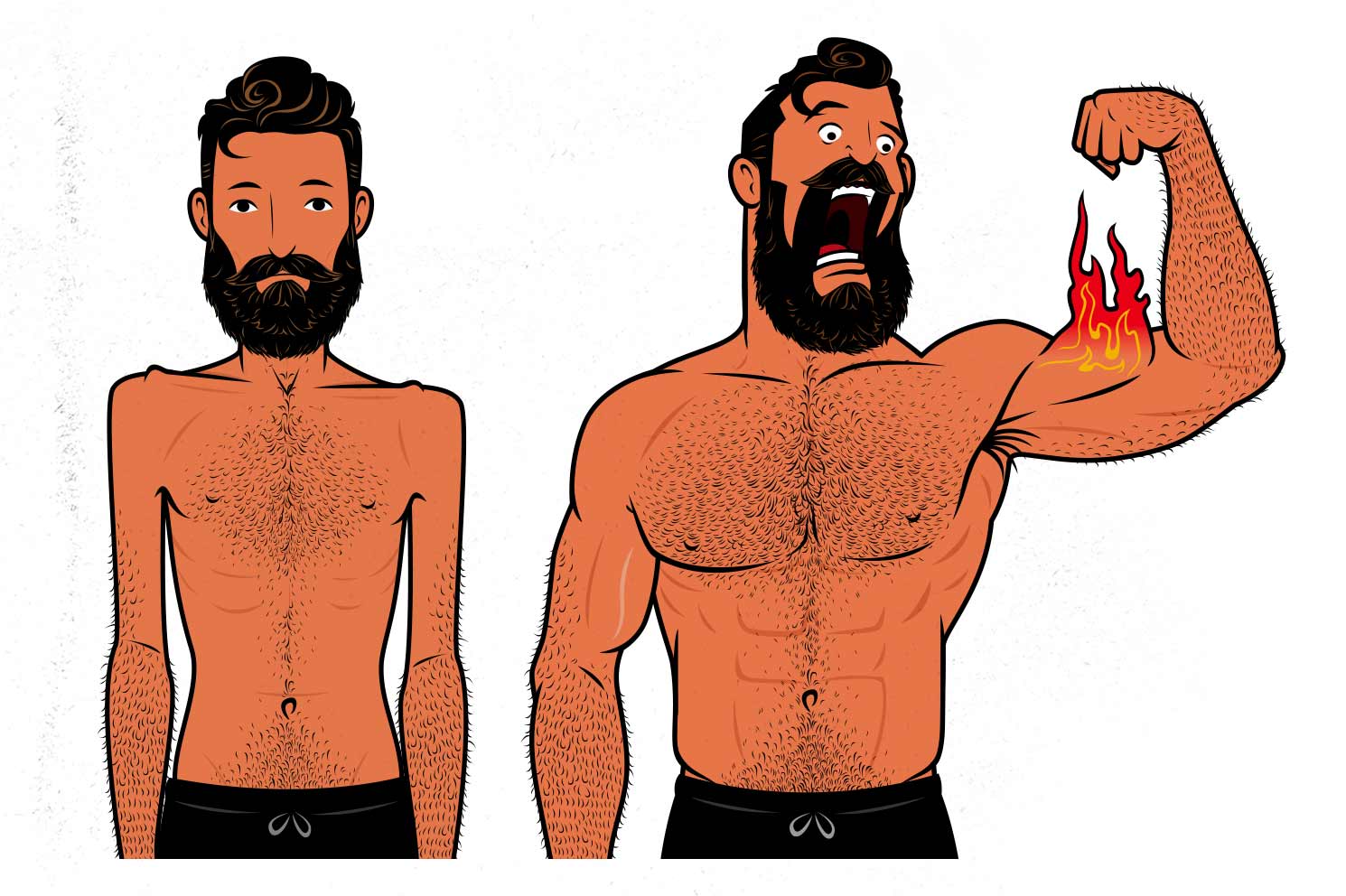
It’s common to feel stiff for a couple hours after waking up, so if you work out early in the morning, it can help to do a few minutes of cardio before you start lifting weights. The same is true if it’s cold. A few minutes of cardio can help to warm you up, making you more limber.
If you’re new to lifting, you have a history of injuries, or you aren’t confident in your technique, doing some drills before your warm-up sets can help you improve your technique. For example, doing dead bugs can teach you how to move at the hips and shoulders while keeping your belly braced. If you do them before squats, deadlifts, or overhead presses, you may find that your technique improves.
There’s very little evidence showing a benefit to stretching, and there’s quite a lot of evidence showing that if you take it too far, it can reduce your strength gains and muscle growth. Still, if you find that it helps, there’s no harm in doing some light, easy stretching before working out. And if it allows you to use a deeper range of motion, the benefits will probably outweigh the potential downsides.

If you want a customizable workout program (and full guide) that builds these principles in, then check out our Outlift Intermediate Bulking Program. If you liked this article, you’ll love the full program. Or, if you’re still skinny or skinny-fat, try our Bony to Beastly (men’s) program or Bony to Bombshell (women’s) program.



